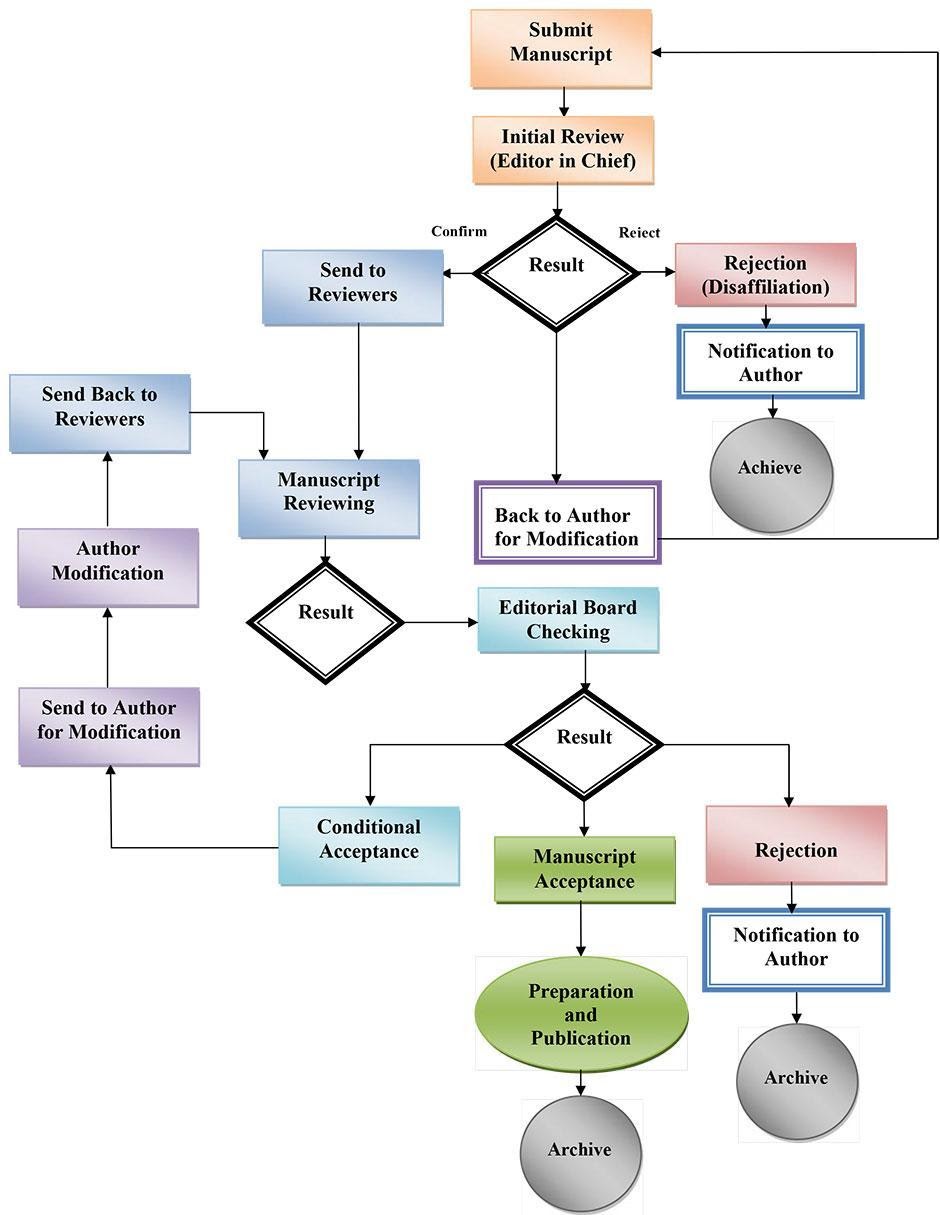Peer Review Process
Manuscript Review
Initial Screening
Submitted manuscripts are first screened by the editorial staff for completeness and to determine if the manuscript meets the general criteria for the journal. The Editor will decide to: (a) send the manuscript out for double blind review, (b) request initial revisions prior to the double blind review process, or (c) reject the manuscript.
Peer Review
Each manuscript passing initial plagiarism will be subjected to rigorous and anonymous peer-review by a minimum of 2 peer reviewers. Referees who review a manuscript remain unknown to the authors. The journal’s independent status ensures a submission acceptance rate based on merit and not favor, bias, or personal preference. All the reviewers send the editor a detailed report with their comments on the manuscript and their recommendation. Authors receive reviewers’ recommendation by the editorial staff and they never enter in contact with reviewers. Reviewers have to complete their reviews within 2-3 weeks. For papers which require revision, the editor will make sure that the quality of the revised paper is acceptable.
Peer review / responsibility for the reviewers
The following are deemed as the responsibilities of all reviewers in charge of undertaking the reviewing process of manuscripts submitted for publication at the TBEAH journal.
- Peer review assists the Editor in Chief and the editorial board in making editorial decisions while editorial communications with the author may also assist the author in improving the paper.
- Any selected referee who feels unqualified to review the assigned manuscript or unable to provide a prompt review should notify the editor and excuse himself from the review process.
- Manuscripts received for review must be treated as confidential documents. They must not be shown to, or discussed with, others except as authorized by the Editor-in-Chief.
- Reviews should be conducted objectively. There shall be no personal criticism of the author. Reviewers should express their views clearly with supporting arguments.
- Reviewers should identify relevant published work that has not been cited by the authors. Any statement that had been previously reported elsewhere should be accompanied by the relevant citation. A reviewer should also call to the Editor-in-Chief's attention any substantial similarity or overlap between the manuscript under consideration and any other published paper of which they have personal knowledge.
- Privileged information or ideas obtained through peer review must be kept confidential and not used for personal advantage.
- Reviewers should not review manuscripts in which they have conflicts of interest resulting from competitive, collaborative, or other relationships or connections with any of the authors, companies, or institutions connected to the papers.

